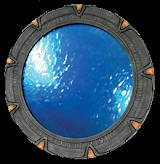Honors Physics conducted two lab investigations that addressed radiation intensity and one that introduced students to count statistics. The first two investigations allowed students to determine the effects of distance and shielding on radiation intensity. Unsurprisingly, the greater the distance, the fewer radioactive emissions hit the radiation sensor. Also, adding more and more shielding between the source and the detector reduced the intensity of the radiation. The final investigation introduced students to the statistics of radioactive decay. Folks followed count numbers for discrete time increments and compared them to Poisson and Gaussian distributions. With longer count intervals, the distributions were more normal in nature; at smaller count intervals, the distributions were best viewed with Poisson statistics. This indicates that the method of analysis, even for a source with fairly constant activity, depends on measurement duration and number of counts. Groups didn’t quite finish up with this last bit, so we’ll have time at the start of class to do so tomorrow before moving on explore nuclear decay in more detail and take up the concept of half-life.
Physical Science B reviewed their MCAS motion materials. We took time to address any problems and will do so again at the beginning of class tomorrow. Then, it is on to forces!
Physical Science E reviewed their MCAS motion short-answer questions and we made sure that all folks were clear on the appropriate responses and strategies for attacking these types of questions. Then, students were given a sheet of practice problems for velocity and acceleration. We will go over these tomorrow before moving on to forces.
Physics F and G completed their introduction to atomic physics with a discussion of matter waves and how the combination of this idea and the quantum nature of energy brought us to our current understanding of atomic structure. We took a look at Heisenberg’s Uncertainty Principle, also, and discussed its implications for understanding atomic and subatomic level phenomenon. Tomorrow, G Block will conduct a lab investigation associated with our next chapter of study – the nucleus and nuclear processes. F Block will start discussing this material and have their lab investigation on Thursday.
Homework
Honors Physics A: Complete lab write up
Physical Science B: Look over motion materials for any additional questions/problems
Physical Science E: Complete velocity and acceleration problems
Physics F: 23C #1; Chapter Review items #29-38
Physics G: Read lab protocol sheet. Chapter Review items #29-39 for Thursday
5/11/10
Subscribe to:
Post Comments (Atom)







No comments:
Post a Comment